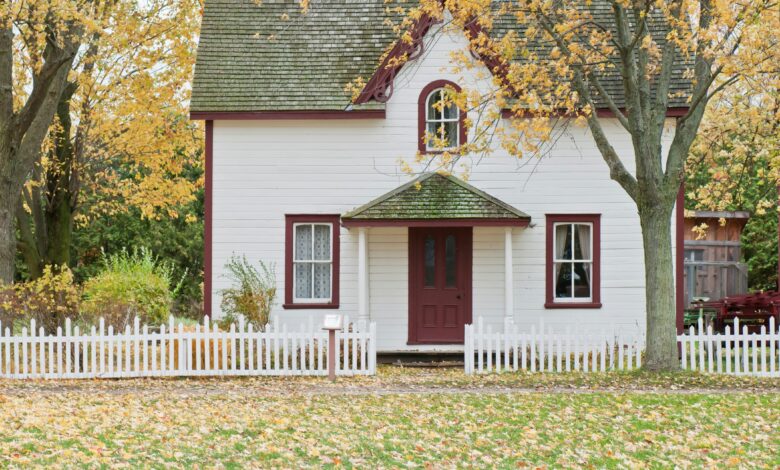How To Save Money For A House In 7 Steps

Alright, let’s be real owning your own home feels like climbing Mount Everest sometimes, especially when you’re watching your rent checks disappear month after month.
But here’s the thing: becoming a homeowner isn’t actually a fantasy reserved for the ultra-wealthy. It’s absolutely within reach if you know what you’re doing.
I’ve helped countless people navigate this journey, and I can tell you straight up that the difference between dreamers and actual homeowners comes down to having the right strategy and sticking with it.
Whether you’re starting from scratch with zero down payment saved or you’ve already got a head start, this guide breaks down the exact roadmap to get you into your own place.
No fluff, no complicated financial jargon, just practical steps that work. 🙂
How Much Should I Save For A House Each Month?
Understanding Your Target Amount
When I first started saving for a house, I realized I couldn’t move forward without knowing my goal. You can’t save for something if you don’t know what it costs.
How much you save each month depends on your income and the type of house you want. If you earn $35,000 a year and want a $300,000 home, your plan will look different from someone earning more.
Start by checking house prices in your area websites like Zillow or Realtor.com help. Once you know your target, calculate about 20% of it. That’s your ideal down payment and helps you avoid paying mortgage insurance later.
Breaking Down Your Savings Goal
Here’s how I figured mine out. For a $250,000 home, I needed $50,000 for a down payment.
- In 2 years: $2,083 per month
- In 3 years: $1,389 per month
- In 5 years: $833 per month
Seeing the numbers helped me stay realistic. The key is honesty save what fits your budget and stay consistent. You don’t need to rush; steady progress is what gets you to your front door.
How Long Does It Take To Save For A House?
Realistic Timeline Expectations
Here’s what I tell people: most folks can realistically save for a down payment in 2 to 5 years. The timeline isn’t magical it’s just math combined with consistency. Someone aggressive about their savings might do it in 18 months.
Someone being cautious while raising kids might need 4 years. Both approaches are valid. The real kicker? Your timeline only works if you actually stick to it.
I’ve seen people save inconsistently for seven years and still be nowhere near their goal. Meanwhile, others hit their target in three years simply because they automated everything and never looked back.
Your timeline is personal. Don’t let anyone else’s expectations pressure you into something unrealistic. The best timeline is one you’ll actually follow through on.
How To Save Money For A House In 7 Steps
Now we’re getting to the good stuff. These seven steps are what actually work:

Step 1: Set A Timeline (And Make It Realistic)
This is step one for a reason it’s the foundation of everything else. If you don’t know when you want to buy, you won’t know how much to save each month or whether your efforts are actually on track.
Think about your life situation honestly. Are you single and flexible? Maybe 18 months is realistic. Married with two kids and a job you can’t leave? Probably 4 years makes more sense. Recently started a new career? Give yourself buffer time.
Here’s what I recommend: write down your target date and actually put it somewhere visible. Your phone background, a note on your bathroom mirror, wherever. It sounds simple, but psychology matters here you’re more likely to hit targets you see regularly.
Step 2: Automate Your Savings
This single step changes everything. Seriously, IMO this is the most underrated piece of the puzzle.
Once you know your monthly target, set up automatic transfers that happen right after you get paid. Don’t wait until the end of the month to save “whatever’s left” that money never appears. Instead, pay yourself first.
You can automate through:
- Your bank’s built-in transfer feature
- Apps like Qapital or Acorns
- Your employer’s direct deposit system (split your paycheck directly into savings)
- Round-up apps that automatically save your spare change
The magic of automation? You stop thinking about it. No willpower required. No temptation to skip a month. The money just flows where it’s supposed to go, and your brain adapts to living on what’s left.
Step 3: Don’t Be In Haste
Let me be blunt: rushing to buy a house before you’re ready is financial self-sabotage. I’ve watched people take on way too much debt, drain their emergency funds, and basically destroy their financial stability just to move a few months earlier.
Here’s what actually happens when you rush:
- You end up with a smaller down payment, meaning higher monthly mortgage payments
- You miss opportunities to improve your credit score
- You skip important inspections or contingencies because you’re eager
- You accidentally buy a money pit because you didn’t take time to investigate properly
Remember, there’s no prize for getting there first. The marathon beats the sprint every time. You have rent for today and a dream home for tomorrow. Both deserve your focus.
Give yourself permission to take the full timeline you’ve planned. That breathing room is actually protection, not procrastination.
Step 4: Choose Affordability
This might be unpopular, but I’m saying it anyway: don’t buy the most expensive house you can qualify for. Just because a bank approves you for a $350,000 mortgage doesn’t mean you should take it.
Think about what you actually need versus what would be nice to have. Does your family need four bedrooms and a home gym, or would three bedrooms and a nice kitchen genuinely make you happy? That’s not settling that’s being smart.
Benefits of choosing affordable:
- Shorter timeline to save the down payment
- Lower monthly mortgage payments
- More room in your budget for emergencies
- Less stress overall
- Ability to build real wealth instead of house-poor living
Here’s the reality: you can always upgrade later when your income grows or your circumstances change. But right now, you need something that lets you build stability. A modest home you actually own beats a fancy one you’re still paying off at 65.
Step 5: Reduce Your Living Costs
We’ve all heard “live below your means,” but what does that actually look like in practice?
Start by auditing your spending for the last 30 days. Be specific:
- Subscription services you forgot about (Netflix, Spotify, gym memberships, apps)
- Dining out and delivery (Uber Eats, DoorDash, restaurants)
- Unnecessary shopping (the Amazon purchases you forgot you made)
- Expensive utilities (can you switch providers? Reduce energy use?)
- Premium versions of things (paying extra for faster shipping, ad-free versions, etc.)
The honest part? You don’t need to cut everything brutally. You just need to cut the stuff that doesn’t genuinely improve your life. If your $15/month coffee subscription brings you joy and keeps you sane, maybe that stays. But that $120/month for a streaming service you never watch? That’s going.
I had a client who was shocked to realize she was spending $340 monthly on subscriptions alone. By cutting unnecessary ones, she freed up money that cut two years off her savings timeline. That’s the power of ruthless auditing.
Every dollar you save on lifestyle spending becomes a dollar toward your down payment. That’s not deprivation that’s strategy.
Step 6: Have More Than One Stream Of Income
Here’s something many financial guides won’t tell you: if your income barely covers your expenses, saving for a house while maintaining your lifestyle is nearly impossible. You need more money coming in.
This doesn’t mean you need a full-time second job. Options include:
- Freelance work in your field (writing, design, consulting, etc.)
- Gig economy apps (Instacart, food delivery, TaskRabbit)
- Teaching or tutoring (online tutoring platforms, English teaching)
- Selling items (reselling thrift finds, digital products, used items)
- Small online business (dropshipping, affiliate marketing, Etsy shop)
FYI, many people save their entire down payment using side income. That way, their regular salary still covers living expenses, and the side money is pure savings. This approach removes the pressure to cut your lifestyle to the bone.
Even an extra $300-500 monthly from a side hustle dramatically accelerates your timeline. That’s $3,600 to $6,000 per year going straight to your housing fund.
Step 7: Consult A Real Estate Agent
Before you’re even ready to buy, connect with a good real estate agent in your target area. They’re not trying to pressure you into buying, they actually want to understand what you need so when you are ready, the process is smooth.
A solid agent can tell you:
- What neighborhoods are up-and-coming (better value now)
- Current market conditions and trends
- What your budget realistically buys in your area
- What features actually matter for resale value
- Red flags to watch for
Honestly? I recommend talking to at least two agents before you’re serious. Different agents have different local expertise and communication styles. Find one who feels genuinely helpful, not pushy.
How To Save For A House In 2 Years
If you’ve got a specific 24-month deadline, your strategy needs to be more aggressive:
Step 1: Determine Your Down Payment
Start with the number. Don’t be vague here. While you technically can put down as little as 3.5% (with PMI insurance added), don’t plan around that. Aim for at least 15-20% down so you don’t spend years paying for mortgage insurance alongside your actual mortgage.
If homes in your area average $280,000, and you want 20% down, you’re targeting $56,000. That’s your north star.
Step 2: Know The Specific Figure
This might seem obvious, but most people fail here because they never get specific. They say “I want to save for a house” but never actually commit to a number.
Write it down right now. Not “about $50,000.” Actually: “$52,347.” That specificity does something psychological it becomes real instead of abstract.
Then do the math:
- Your target: $52,347
- Your 2-year timeline: 24 months
- Monthly requirement: approximately $2,181
Can you do $2,181 monthly? If not, adjust your target price downward or extend your timeline. Both are legitimate solutions.
Step 3: Use A Money Market Account
Here’s where regular savings accounts actually work against you. Most offer 0.01% interest basically nothing.
Open a high-yield money market account or savings account instead. Online banks like Ally, Marcus, or Capital One typically offer 4-5% annual interest, especially in today’s environment.
On a $50,000 balance, that’s $2,000-2,500 in free money just from having your savings in the right place.
Important: Make sure the account doesn’t have withdrawal restrictions that would trap your money when you’re ready to use it. Some accounts require 6-month holds or charge penalties for early withdrawal. Read the fine print before you commit.
Step 4: Take Advantage Of Windfalls
Windfalls are the secret weapon most people ignore. I’m talking about:
- Work bonuses
- Tax refunds
- Inheritance
- Gifts from family
- Unexpected checks
When these land in your account, your immediate instinct will be to spend them. Resist that. I know it’s tempting. But that $3,000 tax refund could accelerate your timeline by 1.5 months if you funnel it directly to your housing fund.
Set a personal rule: 50% of any windfall goes to the house fund, 50% you can use for something fun. This way you’re not completely denying yourself, but you’re still leveraging these opportunities.
Step 5: Reduce Retirement Savings (Temporarily)
Okay, this one makes people nervous, so let me be clear: this is only temporary, and it’s strategic.
Most people contribute regularly to an IRA or 401(k). In 2024, the limits are $6,500 for IRAs and $23,500 for 401(k)s. If you’re maxing these out and need to save $50,000 for a down payment in 2 years, you’re essentially trying to save twice what you normally would.
Here’s the reality: Pausing contributions for one year doesn’t destroy your retirement. Seriously. If you’re 35 years old with 30 years until retirement, one year won’t tank your future. But that down payment is keeping you from building equity right now.
The strategy: temporarily dial back retirement contributions to the minimum needed for employer match only. Then once you’ve bought your house and settled into ownership, ramp retirement savings back up. You’re not sacrificing retirement you’re temporarily optimizing for a different priority.
How To Save For A House While Renting
If you’re currently renting (and statistically, most first-time homebuyers are), these tactics are your best friends:
Strategy 1: Move To A Smaller Apartment
I know this sounds backwards shouldn’t you save by staying put? Not really.
If you’re paying $1,500/month for a two-bedroom apartment and could move to a one-bedroom for $1,100, that $400 difference adds up fast. $400 × 12 months = $4,800 annually going straight to your down payment fund.
Would you rather live in a slightly smaller space for 2-3 years and own your own home, or stay comfortable and rent forever? That’s the question that answers itself.
Strategy 2: Pay Off High-Interest Debt
Here’s the thing about credit card debt when you’re trying to buy a home: lenders absolutely notice it. High debt-to-income ratios kill your mortgage approval odds.
If you’re carrying $10,000 in credit card debt at 18% interest, you’re hemorrhaging money. Paying that off first:
- Improves your credit score (crucial for mortgage rates)
- Frees up monthly cash flow for savings
- Makes you look less risky to lenders
- Puts you in a stronger negotiating position
Sometimes, delaying your home purchase 6 months to eliminate high-interest debt actually accelerates your timeline because you’ll qualify for better mortgage rates and have better cash flow.
Strategy 3: Create A High-Yield Savings Account
I mentioned this earlier, but it deserves repeating because it’s genuinely important.
The difference between a standard savings account (0.01%) and a high-yield option (4.5%) on a $30,000 balance is roughly $1,350 per year. That’s free money for doing absolutely nothing except choosing the right account.
Split your savings into two accounts:
- Emergency fund (regular savings, in case you need it quick)
- House fund (high-yield savings, locked and focused)
This psychological separation keeps your house money separate from your “just in case” money, making you less likely to raid it.
Strategy 4: Explore Rent-To-Own Options
Here’s an interesting middle path some people overlook: rent-to-own arrangements. Basically, you rent a property with an agreement that eventually you can buy it. Part of your rent payments might go toward the purchase price.
Meanwhile, you’ve locked in the property you want it can’t suddenly get sold to someone else. Fair warning: These deals vary wildly. Some are excellent, some are predatory. Get a real estate lawyer to review any rent-to-own agreement before you sign. Legal zoom or local legal aid services can help if cost is a concern.
The advantage is real: you get to test drive homeownership in that specific house while you’re finishing your down payment savings.
Strategy 5: Work With A Budget
You can’t save for a house without controlling your money first. Sometimes, you can adjust the percentages depending on your needs and income level.
For someone saving aggressively for a house, you might adjust this to 50/20/30 or even 50/15/35. The point is having a deliberate allocation, not just spending whatever and saving whatever’s left.
Use a tool like YNAB (You Need A Budget) or even a simple spreadsheet. The act of tracking your money forces you into awareness, and awareness leads to better choices.
Final Thoughts
Homeownership isn’t about one big move it’s built on months of consistent, intentional action. Start small, automate your savings, stay disciplined, and keep learning.
The people who reach their goals aren’t the richest they’re the most consistent. You’ve got what it takes; now it’s time to prove it.

Pin this guide for later.








